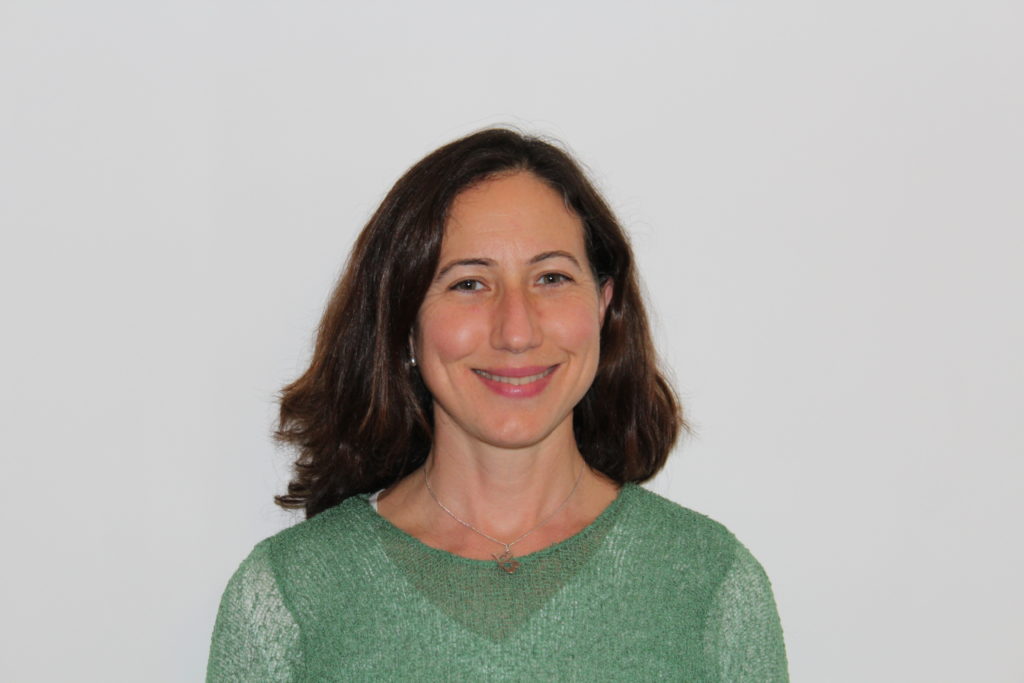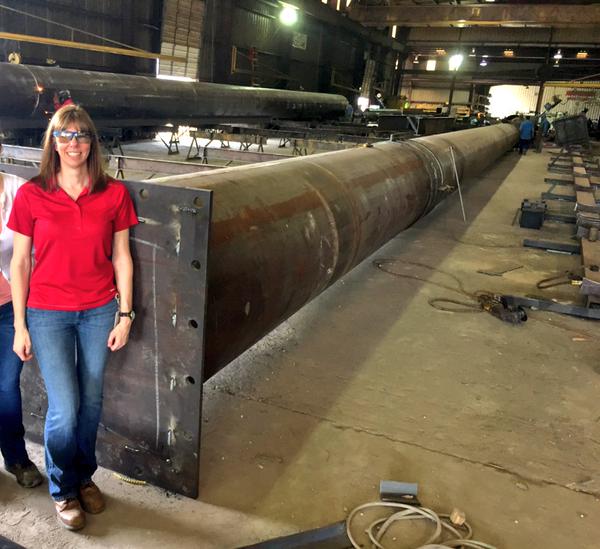Editor’s note: This article first appeared on August 18, 2015 in Civil Engineering online.
HASHTAGS MIGHT BE READY conversation starters now, but they began simply as metadata tags so that content—be it on social media or otherwise—could be easily searched online. Today, they have grown into the dominant way of organizing large online conversations. This includes the microblogging site Twitter, where hashtags passed through their ironic-aside phase circa 2010, survived the ribbing of Jimmy Fallon and Justin Timberlake in 2013 that made the use of the tags momentarily passé, to finally become a legitimate way to organize conversations and weekly chats. Then there are those hashtags that have become viral sensations in their own right—such as last year’s #IceBucketChallenge—in response to which enormous numbers of people joined in to show their support for a cause. Such has been the case in the last few weeks as engineers have made #ILookLikeAnEngineer a social movement to support women and diversity in all disciplines of engineering.
The tag #ILookLikeAnEngineer was begun by Isis Wenger, a software engineer known in that industry as a “full-stack engineer,” as a result of the negative comments made after she participated in one of her employer’s recruitment campaigns. She called for women to join her in standing up as engineers using the #ILookLikeAnEngineer hashtag. Participation quickly went viral—including within the civil and structural engineering fields—and encompassed individuals, universities, companies, and major organizations that want to support the inclusivity for which the hashtag stands.

“One of the Society of Women Engineers’ objectives as an organization is to change the image of what people think of when they hear the word ‘engineer,’” said Colleen Layman, P.E., the president of the Chicago-based Society of Women Engineers, and the power-water management practice director and a vice president of the Omaha-based architecture, engineering, and consulting firm HDR, Inc. Layman wrote in response to questions posed by Civil Engineering online. “In so many ways women still face the challenge of being taken seriously for their accomplishments and their skills in the engineering workplace,” Layman noted. “The response that Isis received—‘Are you really an engineer?’—is unfortunately too common a reaction from the general public even today, in the 21st century,” she said. “While some workplaces are more female-friendly because of culture or leadership, it is still a common challenge that women engineers face in the workplace.”
In her 20 years in the power-generation industry, Layman has seen the situation for women in civil and structural engineering slowly improve. “I have seen two general trends,” Layman said. “First of all, many millennials seem to have a better acceptance of, and even an expectation of, being in a diverse work environment. They have a desire for a better work-life balance than many previous generations—making benefits like parental leave and flexible work schedules, items that were once considered ‘women’s issues,’ into family issues,” she noted. “Also, more male leaders in engineering organizations are recognizing the value of and the need for diverse thinking as a key to success in a fast-paced, global workplace.”

“The engineers I know are not your stereotypical engineer. Engineers are not shy males with pocket protectors; they are creative, motivated people who solve problems and reinvent every day. The engineers I know are star college athletes, stand-up comedians, marathon runners, and world travelers. As a female, I never felt a bias amongst my peers in school or within my company, but I have felt it from others I work with in the industry such as architects and general contractors. I know that I have to be prepared and confident in my interactions with them. There may be an initial bias, but once they see my competence, there are no issues.”—Kristi M. Grizzle, P.E., LEED AP, a principal in the Houston, Texas, office of Walter P Moore. Grizzle has been an engineer for 12 years. Her Twitter handle is @KmGriz. Kristi Grizzle
This has also been the experience of Angelina Stasulis, P.E., M.ASCE, a structural engineer in the Atlanta office of Walter P Moore who has been an engineer for six years. In written answer to questions posed by Civil Engineering online, she explained that her participation in #ILookLikeAnEngineer was meant as a celebration of diversity. “Engineers aren’t all socially awkward, pocket protector-wearing nerds,” she said. “We’re normal people, from all different backgrounds, with a passion for applied mathematics and science.
“You never hear someone saying ‘I’m a male engineer,’” she added. “Why make the opposite distinction? I’m an engineer, just like all of the other men and women in our field.”
Participants in the #ILookLikeAnEngineer hashtag point out that the field of civil engineering has become a far more inclusive space than it was even a decade ago. “When I was a student and a young professional, I experienced my share of sexual harassment, both blatant and subtle,” said Gretchen Dolson, P.E., LEED AP, the nonhydro-renewables practice leader in the Lincoln, Nebraska, office of HDR. Dolson, who wrote in response to questions posed by Civil Engineering online, has been an engineer for 18 years. “As I have continued in my career, I’ve seen a reduction in conflicts that I attribute to better awareness in the industry, acceptance in peers ‘learning’ to work with women, and personal growth in handling scenarios more effectively than [was the case] when I was younger,” Dolson said.

Many engineers interviewed for this article say that they remember a time in years past when coworkers automatically assumed that a new female employee was an administrative assistant rather than an engineer. But some, like Emily Dhingra, P.E., CFM, M.ASCE, the coastal engineering team lead for the Germantown, Maryland, office of the global firm AECOM—who has been an engineer for just 12 years—have had a different experience. “I have never felt that I didn’t belong in this field,” Dhingra said in written responses to questions posed by Civil Engineering online. “For many years, my boss was a woman engineer and her boss was a woman engineer,” she said. “I lead a team of 10 engineers and scientists, and 7 of them are women. So, I do find civil engineering to be welcoming and inviting of any person—male or female—who’s up for a challenge.”

That’s welcome news for the civil engineering profession. “I know that there are some corners of the industry where women, still, are perceived as not being welcome, and I have heard stories like the one that started #ILookLikeAnEngineer, but I’m thankful and grateful to all the men and women I’ve worked with; I don’t have any real ‘war stories’ to tell,” Dhingra said. “It’s important that we continue to talk about why there aren’t more women going into (and staying in) engineering, but we should also highlight the women who are happy and successful in their jobs.”
Laura Whitehurst, P.E., S.E., LEED AP BD+C, M.ASCE, an associate in the San Francisco office of the international structural engineering firm Walter P Moore, has been an engineer for seven years, and also wrote in response to questions posed by Civil Engineering online. For her, #ILookLikeAnEngineer is also a tribute to just how far acceptance of female engineers has come. “My mother is a geologist, and her mother was a structural engineer, so I’ve had a lot of good role models for strong, female STEM [science, technology, engineering, and mathematics] professionals,” Whitehurst said. “The stories I’ve heard about my mother’s and grandmother’s challenges in the workplace have definitely made me appreciate the changes that have come about since then. I think the ability to judge an engineer on sight is fast receding, and I want to help push that trend,” Whitehurst explained.

Acceptance of diversity has been shown to result in innovative engineering solutions, according to Nadya A. Fouad, Ph.D., a professor and chair of the department of educational psychology at the University of Wisconsin, Milwaukee, and coauthor of the 2011 report “Stemming the Tide: Why Women Leave Engineering,” which was published by the university. But as has been covered extensively by the media, it is difficult to retain women in STEM fields. “Our strongest finding is that although the more diverse the engineering team, the better the innovations, women are leaving for environmental reasons,” Fouad said in a written responses to questions posed by Civil Engineering online. The reasons range from a lack of advancement opportunities and poor investment in employees’ training and development, to a “chilly—and sometimes toxic—environment where there are poor supervisor behaviors,” Fouad noted.
With anecdotal evidence showing an improvement in the treatment of women and a growing diversity in the civil and structural engineering fields over the past few decades, the question becomes what the hard data indicate for the future. “In 2013, women earned 21 percent of the bachelor’s degrees in civil engineering,” said Maria Ong, Ph.D., a senior research scientist at the Cambridge, Massachusetts-based Technical Education Research Centers, Inc. (TERC), a research and development lab for STEM education. Ong wrote in response to questions posed by Civil Engineering online. “[Women’s] representation in civil was almost twice as much as that in mechanical or electrical (12 percent), but less than in chemical engineering (32 percent),” she noted.
The situation for women of color—that is, women who identify as African American, Asian American, Latina, and Native American—is not as positive, according to Ong. Over the past decade, civil engineering has had the fourth-lowest average (following aerospace, mechanical, and electrical) for women of color earning bachelors’ degrees, “though it’s worth noting that, in absolute numbers (not percentages), in 2013, women of color earned the most engineering degrees in civil,” Ong said.
And the opportunities are certainly there, according to Ong, who noted that civil engineering is one of the fastest-growing professional engineering fields. “The U.S. Bureau of Labor Statistics projects that employment of civil engineers will grow 20 percent from 2012 to 2022, faster than the average for all occupations,” Ong said. In comparison, the same projections indicate that architecture and engineering overall are expected to grow a mere 7.3 percent between 2012 and 2022. “To meet this demand [for civil engineers], and to remain economically and globally competitive, the United States needs to increase the size and diversity of its advanced, domestic engineering workforce,” Ong noted. “Women, and especially women of color, are a largely untapped source. We need to be striving to have each group’s representation in civil engineering, and in all STEM fields, reflect their representation in the nation.”
Not only will this increased diversity offer increased numbers for the profession, it will also improve the problem-solving capabilities of the engineers. “I believe there needs to be a cultural shift in engineering, and in all of STEM, whereby everyone accepts that full participation of women, minorities, and other underrepresented groups can lead to new ways of understanding the universe, as well as new perspectives that can transform the practices and outcomes of science and engineering,” Ong said.


